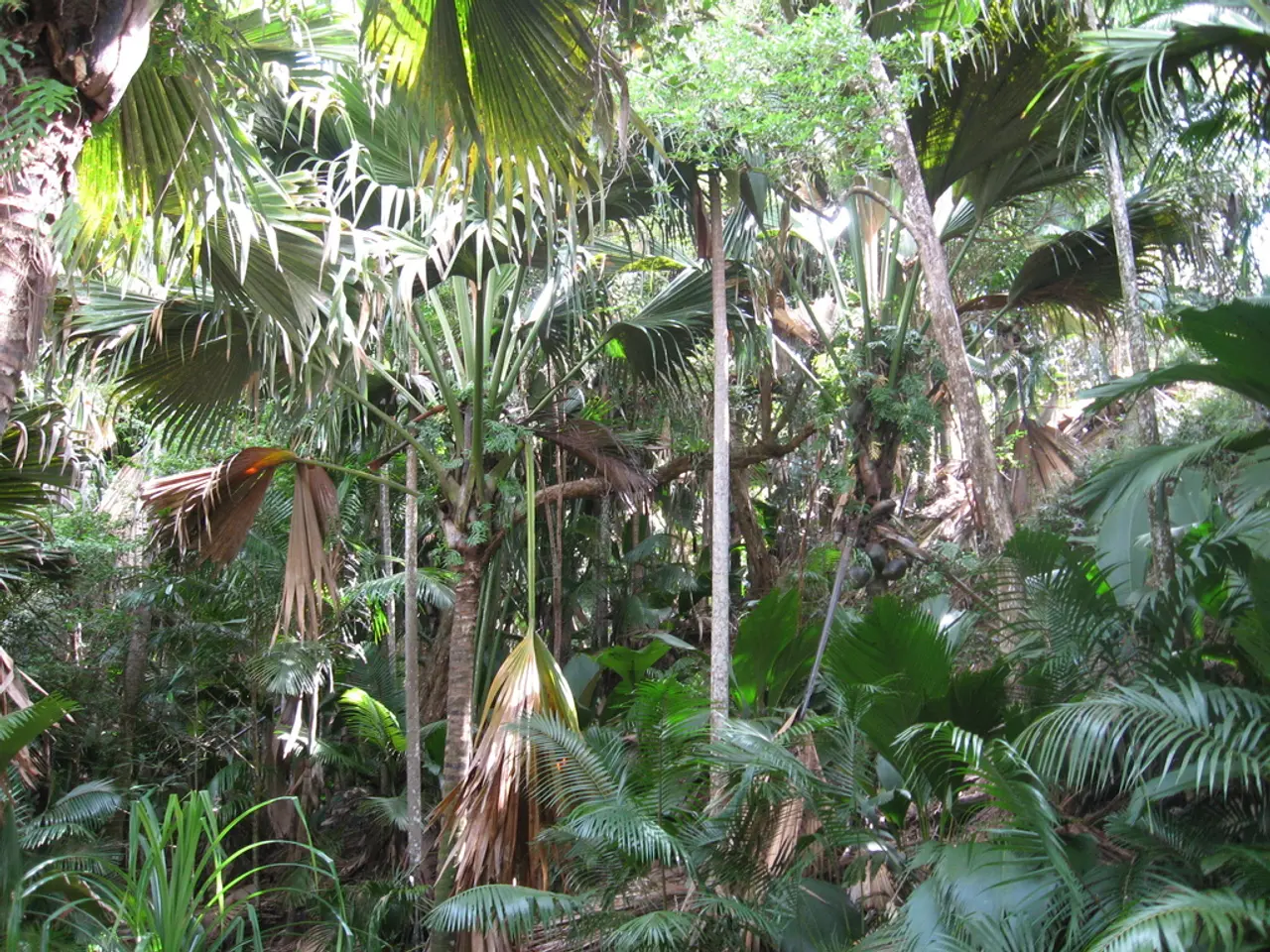Avoid interfering with the roots of your neighbor's tree, especially if they extend into your garden. Steer clear, despite boundary conflicts.
In many U.S. jurisdictions, homeowners have a common law right to remove tree roots from their garden that encroach onto their property, but it's crucial to adhere to certain guidelines to avoid legal issues and potential damage to the tree.
Firstly, pruning the roots of a tree can potentially harm the tree. In some cases, a tree might survive but become unstable, in others, it could decline rapidly or even die. Therefore, it's essential to approach this task with caution and, if necessary, seek professional advice from a qualified arborist.
Before taking any action against encroaching tree roots, it's important to confirm where your boundary is. You are generally legally allowed to cut or trim your neighbor’s tree roots that encroach onto your property up to the property line. However, you must not cause significant damage to the health of the tree. Severely damaging roots that could harm or kill the tree may lead to legal liability or disputes.
It's also strongly recommended to communicate with your neighbor before cutting. While it's not legally required, informing your neighbor can help avoid conflicts and maintain good relations. In cases where substantial roots need cutting, or if the tree’s health may be impacted, consulting a professional arborist is advisable to avoid unintentional damage.
Local laws and regulations may vary by jurisdiction, so it's essential to check municipal or state laws and any homeowners association (HOA) rules applicable to your area. Legal responsibility can arise if you injure the tree or cause property damage while trimming; improper or excessive root cutting could expose you to liability.
Protecting trees during building work in your own garden is necessary to keep them damage-free. Trees in designated conservation areas are automatically protected, and any work requires notification to the council. Cutting structural roots can compromise the stability of a tree, especially during storms. Failing to get approval for work on a tree with a Tree Preservation Order (TPO) can be a criminal offence.
Disturbing nesting birds, bats, or protected species (and their habitats) is illegal under the Wildlife and Countryside Act 1981. Jack Bassett, a consultant litigation solicitor at Setfords, specializing in property and commercial disputes, with expertise in neighbor boundary issues, nuisance claims, and litigation involving land and property rights, advises clients ranging from homeowners to property developers on resolving complex disputes pragmatically and cost-effectively.
In summary, cutting a neighbor's tree roots without understanding the law could lead to expensive and unpleasant consequences. Exercising reasonable care to avoid causing unnecessary damage to the tree while taking action against encroaching roots is essential.
- To mitigate potential damage to a tree while removing encroaching roots, it might be prudent to consult with a professional in the field of environmental science, specifically an arborist, for expert advice.
- When designing a new home or making additions to an existing one, it's important to consider the impact on the surrounding environment, including trees, as protecting them can help maintain a harmonious lifestyle and healthy home-and-garden ecosystem.
- In the realm of home-and-garden improvement, it's crucial to adhere to guidelines during roof construction to ensure the stability of nearby trees, which can be vulnerable to damage from heavy equipment and vibrations.
- To avoid unnecessary environmental disturbances, one should always be mindful of the presence and welfare of protected species within their home-and-garden space, remembering that disrupting nesting birds or their habitats is considered a violation of the Wildlife and Countryside Act 1981.
- In addition to considering professional guidance when dealing with encroaching tree roots, homeowners might also benefit from a comprehensive guide on proper tree management and property boundary rights to makes sound decisions that safeguard both their homes and the environment.




